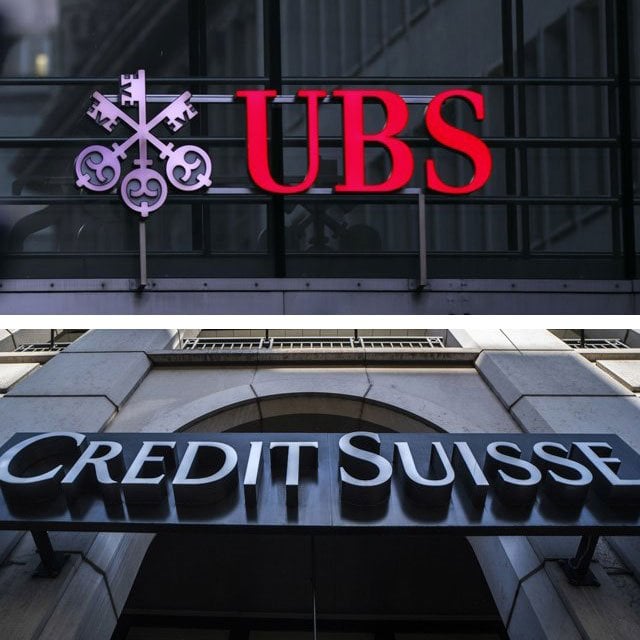How UBS Bought Credit Suisse for a Song — With Morgan Stanley's Help

What You Need to Know
UBS paid about double what it spent on its failed purchase of Wealthfront for more than 50 times the client assets.
The massive deal creates a bank with over $1.5 trillion in assets and more than 12,000 wealth managers worldwide.
CEO Sergio Ermotti must now lead the building of a wealth management powerhouse and the restoration of the standing of Switzerland’s finance industry.
UBS Group AG pulled off one of the biggest bank deals ever in a matter of days. But the groundwork had been laid for years.
When Colm Kelleher became chairman last April, he inherited feasibility studies by predecessor Axel Weber dating back to at least 2020 on what a takeover of Credit Suisse Group AG would look like.
And early this year, after clients pulled tens of billions of dollars from the Paradeplatz neighbor, Kelleher called on a small group of top advisers from his alma mater Morgan Stanley to ramp up contingency planning, according to people with direct knowledge of matter.
The project was top secret and few at the U.S. bank knew what their senior mergers and financial services colleagues were working on with a tight circle of UBS executives, said the people, who asked not to be identified discussing the extent of the preparations.
Those efforts meant that in mid-March, as a crisis of confidence that started in U.S regional banking spread to Switzerland, UBS was ready to go.
On March 15, when Credit Suisse received a lifeline from the Swiss central bank, its crosstown rival quickly turned from war gaming to execution. UBS called on the Morgan Stanley advisors and bankers at JPMorgan Chase & Co., some of whom jetted down to Zurich and signed non-disclosure agreements.
What followed was round-the-clock negotiations on the decisive weekend that saw some advisers working on just three hours of sleep and without showers.
That produced a rescue deal that wiped out some bondholders, trampled on traditional shareholder rights, heightened too-big-to-fail concerns and enraged the Swiss public — but managed to stave off an even bigger global crisis.
Reward, Risk
The emergency tie-up offers huge upside for a bank that investors already valued as Europe’s healthiest major firm — as well as enough risk to threaten that title. At its helm is a 65-year-old Irish banker well acquainted with how a crisis transaction can reshape a company and how a volatile investment bank can derail it.
Kelleher will oversee the most impactful bank combination in more than a decade. It’s one that will shape the global battle for the lucrative business of managing elite wealth, and create a megabank that not only dwarfs every other Swiss lender but is double the size of the nation’s economy.
“It’s a historic day in Switzerland and a day, frankly, we hoped would not come,” Kelleher said on a late-night analyst call on the Sunday the deal was agreed. “While we did not initiate discussions, we believe that this transaction is financially attractive for UBS shareholders.”
Kelleher and UBS’s board will face shareholders who were denied a vote on the deal at the firm’s annual meeting on Wednesday, a day after Credit Suisse’s board spent their event apologizing to angry investors.
UBS has started gathering teams to assess the stars, systems and clients it wants to keep from a massive deal that creates a bank with over $1.5 trillion in assets and more than 12,000 wealth managers spread across the globe.
Spokespeople for UBS and Morgan Stanley declined to comment.
Bargain Price
UBS shareholders have largely applauded a purchase that saw the firm grab its rival for, by one measure, 5 cents on the dollar.
The 3 billion-franc ($3.3 billion) deal was backed by extensive guarantees and liquidity provisions, and offered a golden opportunity to land the crown jewels of Credit Suisse — its Swiss and wealth management businesses — at a bargain price.
One way of viewing it: Last year, UBS agreed to spend $1.4 billion on U.S. roboadviser Wealthfront and its $27 billion in assets under management, before the acquisition abruptly collapsed. With Credit Suisse, it had just paid little over double that for more than 50 times the client assets.
Related: UBS, Wealthfront Cancel $1.4B Deal
Bondholders, meanwhile, have been more focused on the downside, with credit rating agencies cutting their outlooks on UBS’s debt. Investors need only listen to Kelleher to understand why.
The deal was just hours old when Kelleher reached out to Sergio Ermotti, ultimately bringing UBS’s former chief executive officer back and pushing aside Ralph Hamers in favor of a leader with more experience on dramatic restructurings.
“I would argue it’s bigger than any deal that was done in 2008,” Kelleher said at a press conference last week explaining the move. “That brings with it significant execution risk.”




